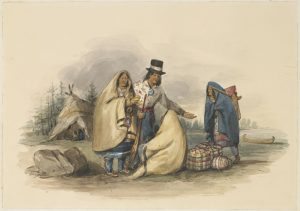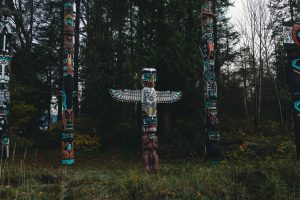Warm up

In partners or small groups ask each the following questions:
- Where are you from?
- What do you know about the history of the land you live on?
- How would you express gratitude or respect in your native language?
- Are there traditional ceremonies or practices in your culture related to acknowledging the land?
Land Acknowledgements
Being a student in the EAP program at Georgian College, you have probably noticed that there is a video for a land acknowledgement statement in a folder called Instructor Info and Syllabus in the Course Information module in all of your Blackboard shells. What is it and why is it there?
A land acknowledgement is a statement that honours Indigenous peoples as representatives of the land with their presence and rights while recognizing the history of colonialism and a need for change in the present day. It is often presented at the beginning of a large ceremony or public event, but it can be done at any time to express gratitude for the land on which one is standing.
There is not one protocol for a “right” land acknowledgement, however there are some tips to consider when giving a statement (Native Governance Centre, 2019):
Do:
- take the time to thoughtfully prepare a land acknowledgement.
- make it meaningful. Research what Indigenous people live on the land now and in the past. Find out the history and any related treaties in your area.
- learn the proper pronunciation of tribe names and places.
- use appropriate language.
- recognize that land acknowledgements coming from an Indigenous person will be different than one coming from a non-Indigenous individual.
- talk about what the land means to you, what you are grateful for.
Don’t:
- use generalizations. Know the specific land that you are situated on and the tribes that live there.
- be critical. Use this as an opportunity to celebrate Indigenous communities today.
- ask an Indigenous individual to deliver a welcome statement.
Remember that saying a land acknowledgement can be uncomfortable, but we need to share in Indigenous peoples’ discomfort. This is just a start in learning and doing better.
Watch Georgian College Land Acknowledgement guide for presenters (1 min) on YouTube
Video source: Georgian College. (2018, October 3). Georgian College Land Acknowledgement guide for presenters [Video]. YouTube. https://youtu.be/Meg_85h5UWI
Assignment/Homework

Research about the Indigenous peoples living on the land in your area today or in the past. Create a land acknowledgement to present at the beginning of your next class. Follow the tips in this chapter to make it meaningful and appropriate.
Attribution & References
Except where otherwise noted, Land Acknowledgements by Virginia McHardy is licensed under CC BY-NC 4.0.
References
Native Governance Centre. (2019, October 22). A guide to Indigenous land acknowledgement. https://nativegov.org/news/a-guide-to-indigenous-land-acknowledgment/

